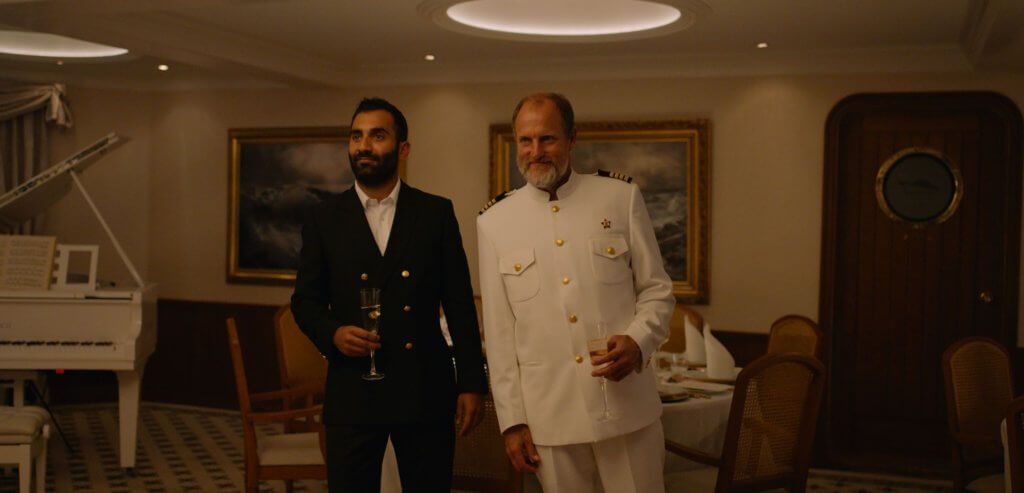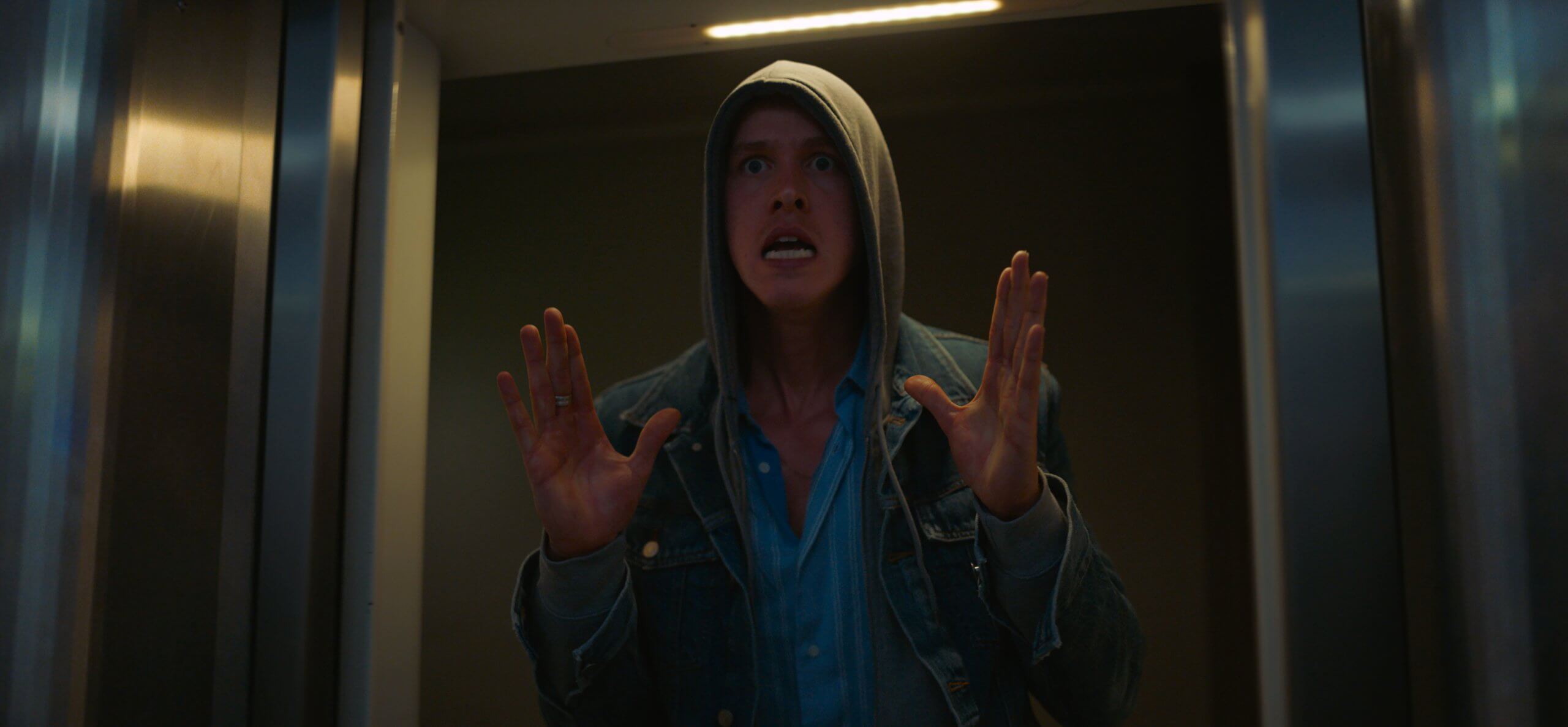Ruben Östlund has built a career out of making the profane political, and the political profane. His first major hit, Force Majeure, was a masterclass in awkwardness, a heart-stopping emotional train wreck of a film that begins ruffled and ends in shambles. His next effort, the Palme d’Or winning The Square, was a hilarious romp through the far-reaches of the art world, featuring a famous scene including the most excruciating performance art possible, in the form of a man terrorizing a dinner party by impersonating an ape. The Swedish director is known (and disliked, in some circles) for playing his politics on the nose, but that’s part of why I’ve enjoyed his work so much thus far. He’s not so much on the nose as he is proudly, wildly dancing on it, with all the class and finesse of the most reserved “apolitical” films. Östlund’s newest work, Triangle of Sadness, finds the award-winning director on his familiar dance floor yet again, this time grooving so hard it almost breaks beneath his feet.
Thankfully, though, Östlund manages to pull it all off. Balancing a three-part story beginning in a hotel, moving to a cruise ship, and later a desert island, it’s perhaps Östlund’s grandest story yet, involving his broadest cast of characters. It’s his first English-language film, and thus his first film featuring an American star, Woody Harrelson. Harrelson plays the disgruntled (and disgruntling) captain of a luxury cruise ship, designed for a small group of only the wealthiest of the wealthy. Aboard we find Carl (Harris Dickson) and Yaya (Charlbi Dean), a struggling model couple, and Dmitry (Zlatko Burić), a self-proclaimed “shit-selling” capitalist from Russia, among many others. The cruise takes the class dynamics the group is used to and turns them on their head, and then again on their feet, and on and on again until they can’t make heads or tails of their place in the pecking order. Through it all there is a great deal of treachery, backstabbing and deceit, some from expected places and some not. Östlund somehow manages to balance this social commentary with gut-busting comedy (at times literally gut-busting), sometimes softening and oftentimes hardening his arguments. Jokes are hammered in deep, repeated and repeated until they lose all sense of comedy and take on a deeper underbelly of sadness and even eeriness. Prolonged jokes build on each other, teasing out sequences until they symphonically burst (again, literally) from the screen.

Östlund’s greatest tool has always been his ability to put interesting characters in interesting situations, and Triangle of Sadness is no exception. Even at their most deplorable, despicable and downright evil, each and every character in the film is someone you must keep watching. All of them are ultimately revealed to be as base and savage as each other — Östlund’s central argument rests on the fact that each character will always do what they do based on what will give them the most power in any given situation. This is revealed in Carl’s many hungry betrayals, Jorma’s loss of innocence, and especially Abigail’s reign of terror. Whether by violence, sex, or skill, the scheming for power never ends.
The central relationship, that of Carl and Yaya, is compelling and hilarious from the start. Östlund finds excellent setpieces for the couple’s arguments and reconciliations — I especially adore a certain fight scene that finds Carl battling with an unwieldy set of elevator doors to get his point across. The later scenes on the beach, testy whispered confrontations over shared pretzel sticks, are just as heartbreakingly hilarious, the kind of humanist tragicomedy that only Östlund could pull off. It’s not just Östlund’s characters, but the world they inhabit and how they interact with that world, that makes Triangle such a monumental achievement. The ship, the beach, the boat and the bathroom are not just backdrops, but central gears in the works of the film, quietly operating behind the scenes to facilitate conflict and resolution.
Again, the characters’ most deplorable acts are always the juiciest to see on-screen — Triangle essentially becomes the most well-constructed, classiest reality show ever put to the silver screen by the time the third act hits. Even at his most profane, Östlund never loses his sense of style, his immutable desire to build his stories like an architect. Triangle of Sadness is not, perhaps, his most beautiful film, but it is certainly his most engaging, and his most well-paced yet. Not a reel of film is wasted in this movie — each moment builds upon the last, towering and eventually cascading down into chaos. Even when I was a step ahead of the story, the satisfaction of my predictions landing was every bit as pleasing as Östlund’s biggest surprises.
I write this review just hours after Triangle of Sadness was awarded the Palme d’Or. I was extremely satisfied to see a film of this level of wit, class and bravado to win such a coveted prize — especially for someone who won it just five years ago! I predict this film will find great success in the U.S. Despite hailing from Sweden, Östlund’s biting criticism of the evils of capitalism (and how they lurk deep in all of us) is incredibly relevant to modern Americans, myself included. Triangle of Sadness begins with chaos and conflict, and ends with a blood-soaked warning for the future — if this cycle of violence and greed continues, we all fail. It remains an incredible entertainment throughout, though, a testament to the power of film to provoke as much thought as it does laughter.
